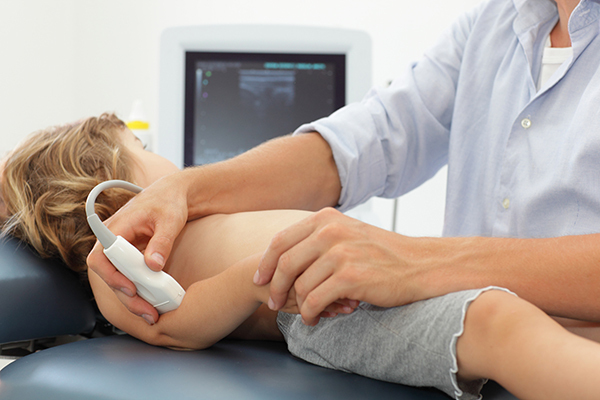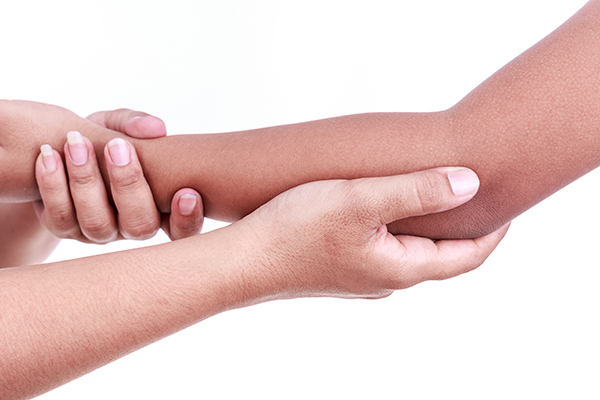March 26th, 2019

Children have weaker, denser bones and less durable joints than most adults, so they're more susceptible to having nursemaid's elbow, also known as “pulled elbow.” Read on to learn more about this painful condition, how to determine if your child has nursemaid's elbow, and how a procedure known as elbow reduction can treat it.
Overview
Nursemaid's elbow, sometimes referred to as “pulled elbow” is the condition of a child's elbow slipping out of its joint becoming partially dislocated. Medically known as radial head subluxation, nursemaid’s elbow is a common injury in early childhood, typically ages 1 to 4 years old, but can occur in children up to age 6 to 7 years. The elbow bone, or radius, is connected to the elbow joint with a series of ligaments, elastic but strong tissue that holds the joint in place. Children have loose ligaments, so it's fairly easy for the elbow to slip out of place, even when you're playing with your child.
Causes of Nursemaid's Elbow
Nursemaid's elbow occurs when you twist or pull suddenly on a child's hand, wrist, or lower arm. This can cause the elbow to slip out of its joint.
It can also occur if you pull a child up to their feet by their arm, swing a child by their arms or hands, or even roll a child over onto their arm.
Symptoms
Symptoms of nursemaid's elbow include pain when a child moves their arm, especially their elbows. While the pain can range from moderate to very severe, a child may not have external symptoms, like a joint that appears distorted, bruising, swelling, or redness.
Look for a child's signs of pain, including holding their arm against their torso with the palm turned toward the body, and a refusal to bend or use their arm.
If you notice these symptoms, don't try to move the child’s arms, force them to straighten and bend the arm, or try to move the joint back in place. You can make the problem worse.

Diagnosis
The child will need to see a pediatrician, or an orthopedist or a physician that specializes in bones, muscles, and other connective tissue in the body. The physician will examine your child's elbow, and then perform an X-ray to check for broken bones, if necessary. However, a good orthopedist can usually tell that the child isn't suffering from a broken bone and may have nursemaid's elbow simply by examining their arm.
Treatment
The child may need what is known as an elbow reduction maneuver to put the elbow joint back in place. The doctor will take the child's forearm and move the joint until a faint pop or "click" sound is heard. Your child may be frightened or cry, but it is necessary to put the joint back in place. Again, don't try to perform this maneuver yourself. A physician needs to perform this treatment. If a child actually has a torn ligament or more severe condition, they may need elbow surgery or repair of a fractured elbow or arm.
Once your child is treated for nursemaid's elbow, they may need pain medications after the joint is popped back in place, and they should feel fine in a few hours. However, this is for an orthopedist to determine.
Once nursemaid’s elbow has occurred, there is a high likelihood it may occur again. A child may need future care after being treated for nursemaid's elbow the first time.
For more information about the diagnosis and treatment of nursemaid's elbow, or treatment of other conditions like an elbow injury in Atlanta, or to schedule an appointment, visit OrthoAtlanta.com.
Back






